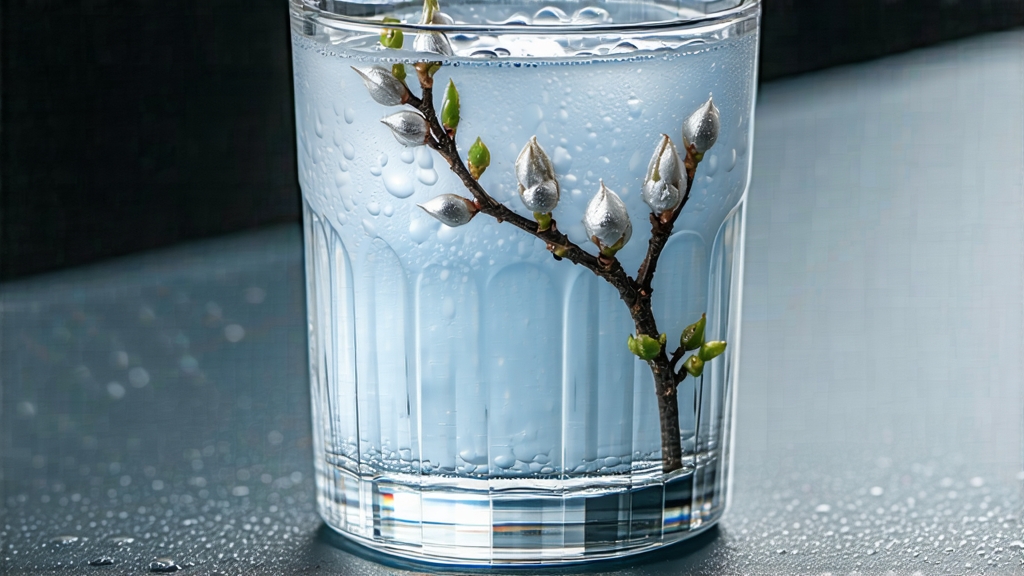
When Chinese tea lovers speak of “white tea,” they are not referring to a pale infusion in your cup; they are invoking an entire microclimate of mountain mist, midnight harvests, and the hush that falls over the workshop when the last tray of buds is laid to rest. Among the white-tea family, Bai Hao Yin Zhen—literally “White-Hair Silver Needle”—is the quiet aristocrat. It is picked only between mid-March and early April, only on clear dawns when the mountain dew is still cold enough to keep the buds closed, and only from the Fuding Da Bai and Zhenghe Da Bai cultivars whose downy tips glint like frost under moonlight. To understand Silver Needle is to listen to a story told in whispers: the whisper of breeze through tea hedges, the whisper of moisture leaving a bud, the whisper you yourself must adopt when you finally meet the liquor and realize how loudly silence can speak.
History: From Imperial Tribute to Global Muse
White tea is often mythologized as the oldest tea in China, yet Bai Hao Yin Zhen’s documented history begins relatively late, in the late Qing dynasty. Local chronicles from 1796 record that bud-only pluckings from northeast Fujian’s Taimu Mountains were packed in silk, cushioned with rice paper, and rushed by courier to the Forbidden City. The empress dowager’s court prized the tea for its cooling properties, believing it calmed “inner fire” better than the green teas that dominated earlier dynasties. Export came only after 1891, when European merchants docking at Fuzhou port noticed the buds’ resemblance to acupuncture needles and coined the name “Silver Needle.” By the 1920s, Fuding counties had built specialized withering attics whose cedar-wood slats perfumed the tea; these attics still operate, their beams blackened by decades of slow oxidation. In the 21st century, Silver Needle has become the darling of specialty cafés from Melbourne to Montreal, yet its production remains so micro-batch that a single acre of certified-organic garden can supply only thirty kilograms a year—scarcity that elevates every sip into a small act of time travel.
Terroir: Where Granite Meets Sea Fog
Fuding and Zhenghe counties lie on the northeastern lip of Fujian province, where granite domes thrust above subtropical forest and the East China Sea sends nightly fog inland through river gorges. Daytime temperatures hover around 18 °C, nights drop to 10 °C, and the diurnal swing shocks the tea bush into hoarding amino acids—especially L-theanine, responsible for the tea’s brothy sweetness. Soils are lateritic, rich in potassium yet fast-draining, forcing roots to dive deep for water; that struggle concentrates aromatic volatiles. Within Fuding itself, micro-valleys such as Guan Yang, Pan Xi, and Tai Mu exhibit subtle differences: Guan Yang buds tend to be plumper, yielding a peach-skin note, while Tai Mu buds are slender, gifting a cooler, spearmint echo. These nuances are guarded like family secrets; farmers will walk you to the edge of their plot, point to an invisible line of mycorrhizal fungi, and simply say, “Beyond here, it is no longer Yin Zhen.”
Plucking: One Bud, Zero Leaves, Countless Rules
The harvest window is brutally short. Experienced pickers rise at 3:30 a.m. to avoid the 10 a.m. sun that can redden buds. They wear bamboo hats not for folklore but to shield the buds from breath-borne moisture. The standard is ruthless: only the unopened needle whose “three whites” are present—bud, first scale, and tiny second scale must all be cloaked in down. A top picker gathers just 500 grams of fresh buds in a dawn, and five kilograms of fresh material yield one kilogram of finished tea. To non-initiates the field looks idle; conversation is kept to a minimum because, farmers insist, sound waves bruise cells. By 8 a.m. the wicker baskets are rushed to the withering room where the real alchemy begins.
Craft: The Art of Letting Go
Unlike green tea, Silver Needle is never pan-fired or rolled. Its processing is a masterclass in restraint. The buds are spread two fingers deep on bamboo trays stacked like sliding drawers in a cabinet. For 36 to 48 hours they simply rest in a